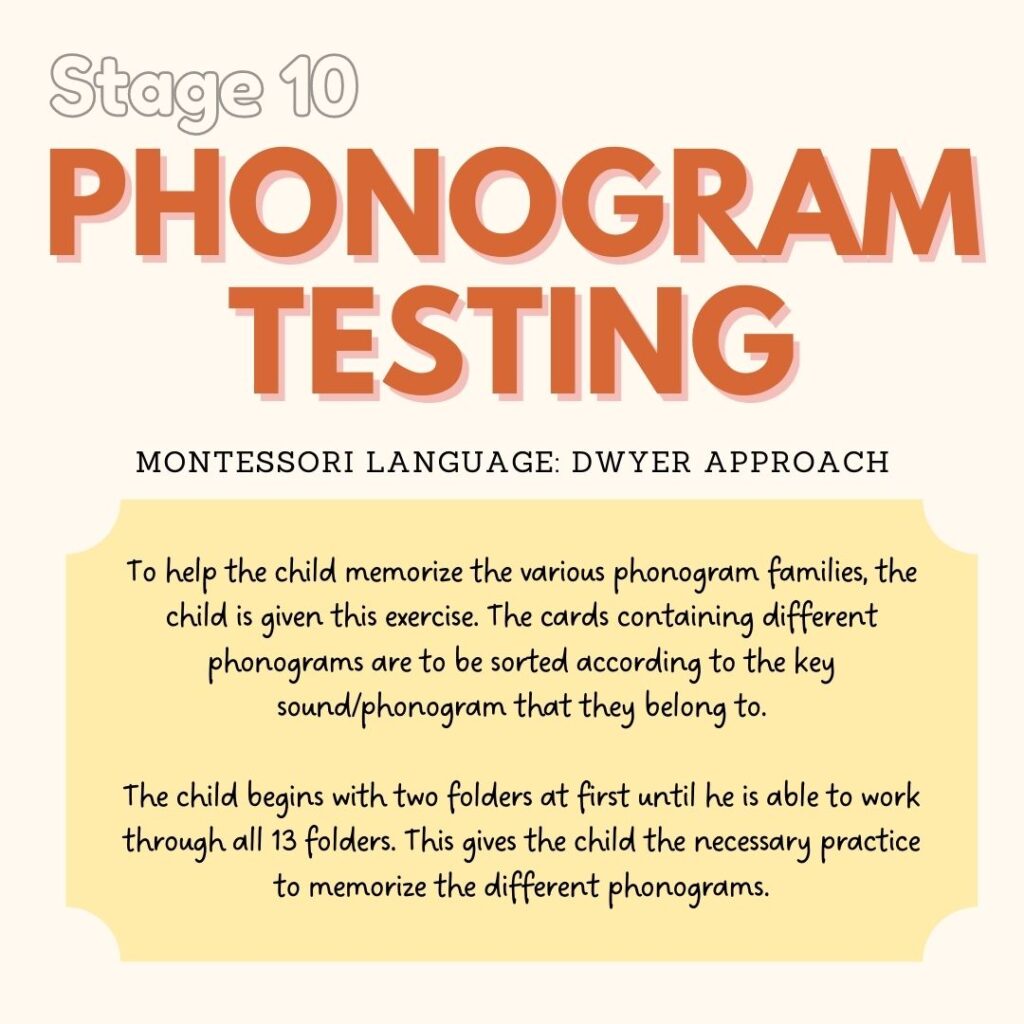As part of the total Montessori approach to the development of language, here are the stages to having the keys to write and read in English, according to Muriel Dwyer:
- Stage 6: Puzzle Words
- Stage 7: Little Books
- Stage 8: Reading Folders
- Stage 9: Phonogram Sorting
Feel free to browse the previous stages at will. We have printable materials and references to go along with these stages. Now, we are at Stage 10!

Phonogram Families Test
Prior to this stage, the child has been introduced the different ways a key sound can be spelled using different phonograms using the reading folders.
In Montessori classrooms, phonogram testing is typically done through a series of activities and exercises that help children identify and manipulate phonograms. These activities include matching phonograms to their corresponding sounds, using the Moveable Alphabet to spell words with phonograms, and reading words that contain phonograms. Often using the three-period lesson.
During the first period, the teacher introduces a phonogram and its corresponding sound. In the second period, the teacher asks the child to identify the phonogram and its sound. Finally, in the third period, the child is asked to produce the phonogram sound independently.
In order for the child to know if he has really completed Stage 9: Phonogram Sorting, he will do the what we call “Phonogram Families Test”.

How to Do the Phonogram Families Test?
- Using movable alphabets or pencil and paper, the child writes the symbols of the Key Sounds (i.e., the symbols on the outside of the folder) on one side of the mat or paper.
- Then, from memory, he tries to write all the different phonograms or letters for each key sound.
You can download for FREE the writing prompt for this test in our resource library or from below:

If this article has been helpful, pin it and share the link to your friends. TAG @MindSproutPH on your IG stories & receive a special discount in our store!
